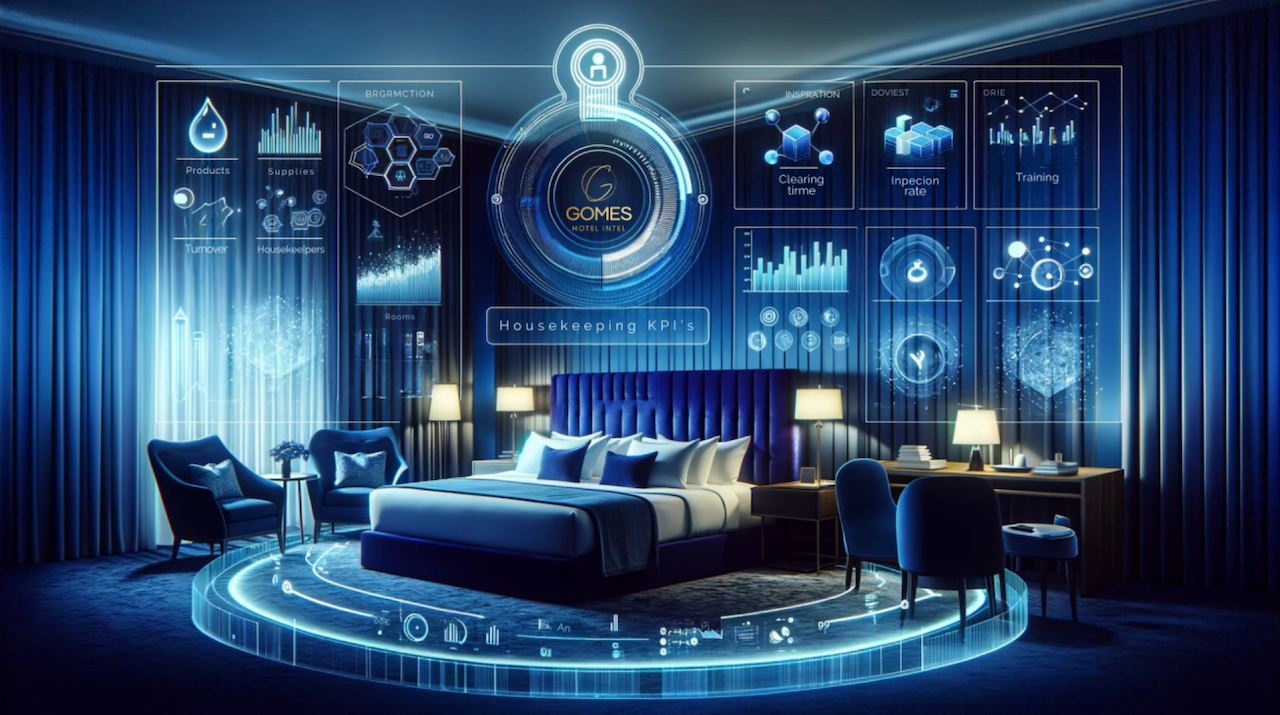
In the heart of hospitality lies the promise of an immaculate and comfortable environment, a pledge upheld by the diligent efforts of the housekeeping department. However, achieving a high standard of cleanliness and efficiency requires a well- orchestrated staffing strategy. Key Performance Indicators (KPIs) are indispensable tools in gauging the efficacy of housekeeping operations, providing a clear lens through which staffing levels can be optimized. This article unfolds the essential KPIs for analysing and optimising housekeeping staff levels to ensure an unswerving delivery of exceptional guest experiences.
Calculation:
Total cleaning time for all rooms / Total number of rooms cleaned.
By measuring the average time taken to clean a room, hoteliers can discern the productivity and efficiency of the housekeeping staff. This KPI aids in determining the optimal staffing levels needed to maintain cleanliness standards during different occupancy rates.
KPI: Number of rooms cleaned by each staff member per day. Calculation:
Total number of rooms cleaned / Total number of housekeeping staff.
This metric provides insight into individual and overall staff productivity, which in turn facilitates the fine-tuning of staffing levels to meet the daily cleaning requirements.
KPI: Guest feedback on cleanliness and housekeeping service. Calculation:
Analyse guest satisfaction surveys, online reviews, or feedback forms to
gauge satisfaction levels regarding cleanliness and housekeeping service.
Guest feedback is a direct indicator of the success of housekeeping operations.
Analysing guest satisfaction scores in relation to cleanliness helps in identifying areas of
improvement and optimising staffing accordingly.
KPI: Percentage of rooms passing internal or external cleanliness inspections. Calculation:
(Number of rooms passing inspection / Total number of rooms inspected) x 100
A high inspection pass rate indicates that the current staffing levels are effective in maintaining the desired cleanliness standards.
KPI: Rates of staff attendance and turnover. Calculation: Attendance Rate:
(Number of days attended / Total number of working days) x 100
Turnover Rate:
(Number of staff exits / Average number of staff) x 100
Monitoring attendance and turnover rates helps in anticipating staffing shortages and making necessary adjustments to prevent service lapses.
KPI: Operational cost incurred in cleaning a room. Calculation:
Total operational cost of housekeeping / Total number of rooms cleaned
This KPI is instrumental in evaluating the cost-effectiveness of housekeeping operations, aiding in balancing staffing levels to manage operational costs while upholding quality standards.
KPI: Consumption rate of cleaning supplies. Calculation:
Total supplies used / Total number of rooms cleaned
Efficient use of supplies is a reflection of well-trained staff. Monitoring supply usage in conjunction with other KPIs provides a holistic view of housekeeping efficiency.
KPI: Hours of training provided and performance improvement noted. Calculation:
Training Hours:
Total hours of training provided to housekeeping staff.
Performance Improvement: Analyse performance metrics pre and post-training to note improvements. Continuous training and development are pivotal in enhancing staff efficiency, which in turn impacts the required staffing levels.
KPI: Average time taken to respond to guest requests. Calculation:
Total response time for all guest requests / Total number of guest requests.
Prompt response to guest requests is a hallmark of excellent housekeeping service. This KPI helps in assessing whether the current staffing levels are adequate to meet guest needs in a timely manner.
In conclusion, a meticulous analysis of these KPIs is foundational to optimising housekeeping staff levels. It’s a data-driven pathway to ensuring that the housekeeping department remains a linchpin in delivering impeccable guest experiences, while also operating within the realms of cost-effectiveness and operational efficiency. Through continuous monitoring and analysis, hoteliers can fine-tune their staffing strategies, fostering a culture of excellence that resonates through every cleaned and well-prepared room awaiting the arrival of guests.